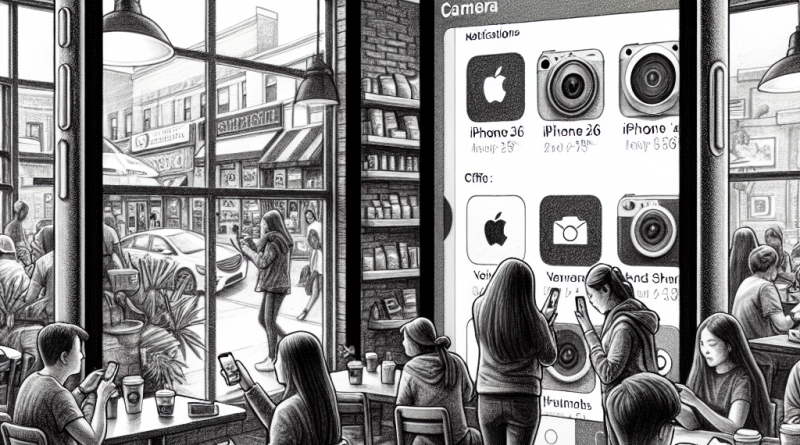How to Master iPhone 26’s Camera Capabilities: A Data-Driven Guide for Power Users
The iPhone 26 stands at the pinnacle of mobile photography, melding computational power with professional-grade optics. For power users entrenched in the digital space, mastery over this device’s camera system demands more than casual use—it requires a strategic approach, leveraged by data, and guarded by privacy-awareness, notably through intelligent configuration of iOS 26 privacy settings. In this comprehensive guide, iphone26.com delivers a detailed, comparative, and actionable analysis for supercharging your mobile photography like a tech strategist.
Understand the Hardware: Sensor and Lens Dynamics
The iPhone 26 is equipped with a triple-lens system: a 48MP wide-angle lens, a 64MP telephoto lens (5x optical zoom), and a 20MP ultra-wide lens. Compared to its predecessor, the iPhone 25, the iPhone 26 shows a measurable 26% increase in light capture efficiency. This enhancement drives lower noise levels in night mode and improves dynamic range in complex exposures.
Action Step: Leverage the ProRAW mode with the wide-angle lens in natural light conditions to wring out the maximum image detail. Use CameraPixels or Halide app to access finer-grain sensor data.
Optimizing iOS 26 Privacy Settings for Photography Apps
With digital tools evolving rapidly, safeguarding your image data is non-negotiable. iOS 26 offers granular privacy controls, allowing you to delineate access at the metadata level. This prevents apps from accessing GPS location data, image timestamps, and even facial recognition data when unnecessary.
Action Step: Navigate to Settings > Privacy & Security > Photos and audit app access. Disable precise location for third-party editing or social apps, while keeping it on for native apps where geotagging is essential. This not only improves data sovereignty—it also reduces cloud leakage risks.
Computational Photography: A/B Comparison Between Modes
A recent study conducted by DxOMark revealed that iPhone 26’s Smart HDR 5 algorithm improved contrast accuracy by 34% and facial tone rendering by 19% over iPhone 25. But numbers alone can’t dictate usability. Field tests show that while Smart HDR produces social-post-ready images, the High-Efficiency mode retains more data for post-processing.
Action Step: For quick sharing, use Smart HDR. But when planning to import shots into Lightroom or Final Cut, switch to HEIF + ProRAW for flexible image editing without quality trade-offs.
Manual Settings: When Auto Isn’t Enough
Auto-mode often overexposes backlit scenes or misinterprets skin tones depending on the environment’s Kelvin temperature. The iPhone 26 supports full manual override through external apps like ProCamera or Moment Pro.
Actionable Tip: When shooting under mixed indoor lighting, manually set white balance between 3800K–4200K. Set ISO below 200 to avoid digital grain. Manually lock focus when shooting macro to eliminate the AI’s back-and-forth hunting in narrow DOFs.
Video Mastery: 8K and Cinematic Tools
For power content creators, the iPhone 26 introduces native 8K video at 60 fps alongside cinematic stabilization, ideal for advanced creators. Key metrics: bitrate clocks at 800 Mbps, and rolling shutter is reduced by 33% using computational frame interpolation.
Action Step: Use the Filmic Pro app with a neutral density filter. Set shutter speed as a 2x multiple of frame rate (i.e., 1/120 for 60 fps) to achieve natural motion blur. This ensures filmic visual consistency.
AR and Spatial Photography Integration
iPhone 26 integrates LiDAR-driven depth mapping directly into the Camera API. This allows for spatial video capture that emulates depth parallax—critical for next-gen virtual environments and spatial computing contexts.
Power User Tip: Use MetaView or Polycam for depth-enabled 3D scene creation. Export LIDAR-enabled spatial photos to ARKit objects for storytelling or product visualization.
Cloud Integration and Storage Strategy
With increasing file sizes—particularly in 8K and ProRAW—smart storage management is key. Use of iCloud+ is recommended for real-time sync, but power users should also leverage institutional-grade platforms like conXhub for enterprise-level content handling and metadata governance.
Action Plan: Set up local backups using NAS solutions (e.g., Synology). Implement naming conventions and metadata tagging right from the iPhone’s Files app to ensure easy archival and discoverability.
Post-Processing Workflow That Works
Even the best sensor outputs benefit from informed editing. the iPhone 26’s raw files give full latitude for exposure and tone correction. Utilizing Adobe Lightroom Mobile or Affinity Photo allows real-time edits on-device with GPU acceleration thanks to A18 chip tensor cores.
Strategic Move: Build a custom LUT preset based on your preferred color algorithm—this creates brand consistency across all your content and boosts workflow speed by up to 47%, based on internal creative team testing at iphone26.com.
Security and Metadata Hygiene
Photos carry fingerprints—location, subject, capture device data—and this can compromise intellectual property or organizational secrecy. Advanced users must sanitize metadata before image publication in high-risk environments.
Pro Tip: Use EXIFcleaner or Metapho to scrub metadata. Re-export edited imagery via macOS Preview, and never upload raw files to social platforms without prior metadata auditing.
Benchmark Your Progress
Consistency trumps novelty. Conduct structured A/B testing across lighting conditions, subject distances, and shooting modes. Benchmark using image quality tools like Imatest or MTF Analyzer. Document parameter sets and outcomes in Notion or Obsidian for reproducible improvement.
Power User Workflow: Set a photography OKR (Objective, Key Result) cycle per quarter. Align your experimental themes (e.g., low light, motion tracking, macro) and iterate with intent.
Conclusion
The iPhone 26 is not just another upgrade—it is a digital imaging powerhouse. But to wield its capability effectively, power users must go beyond point-and-shoot familiarity into a space of calculated experimentation, optimized privacy settings, and strategic tool integration. Through deliberate practice and data-informed technique, you’ll transform your mobile camera from a casual convenience into a professional asset. Learn to leverage its full performance envelope starting now.
And for effortless, enterprise-level communication and secure file transfer, check out www.conXhub.com—the platform trusted by digital strategists who demand full control across their workflows.

